#aerial fiber cable
Text
High-Performance Fiber Optic Cables for the FTTH Access Network Application
With the continuous development of FTTH (Fiber-to-the-Home) network construction, there will be more and more new varieties of fiber optic cables for the FTTH access network application. This article will discuss the three types of fiber optic cables for FTTH in detail.

Fiber Optic Cables for FTTH Access Network
FTTH is an access network architecture that allows deploying xPON technology to provide high speeds of Internet access downstream (from the network to the end-user) and upstream (from the user to the network) over optical fiber from the operator’s switching equipment to an individual home. The main fiber optic cables implemented to build up the FTTH access network are the FTTH feeder cable, FTTH distribution cable, and FTTH drop cable.

FTTH Feeder Cable
FTTH feeder cable, such as stranded loose tube light-armored cable connects the central office/hut to the fiber distribution hub (FDH). It is ideal for duct and aerial installations. This cable has good mechanical and temperature performance, high hydrolysis resistance, high strength loose tube, good crush resistance and flexibility, high tensile strength ensured by steel wire, and good moisture-proof ensured by PSP (steel tape).
Stranded loose tube light-armored cable construction is that 250um fibers are positioned in a loose tube which is made of high modulus plastic and filled with a water-resistant filling compound; A steel wire, sometimes sheathed with polyethylene (PE) for cable with high fiber count, locates in the center of core as a metallic strength member; Tubes are stranded around the strength member into a compact and circular cable core; The PSP is longitudinally applied over the cable core which is filled with the filling compound to protect it from water ingress; The cable is completed with a PE sheath.

FTTH Distribution Cable
FTTH distribution cable connects the FDH to the fiber access termination (FAT). FTTH distribution cable, such as indoor distribution cable uses φ900um tight buffer fibers as an optical communication medium and aramid yarn strength member. It is compliant with a PVC or LSZH jacket. Generally, FTTH distribution cable is available in fiber counts ranging from 2 to 144 fibers. It has excellent stripping performance of tight buffer fiber, good tensile strength, and small size. FTTH distribution cable is used in indoor /outdoor and backbone cable distribution in building applications.
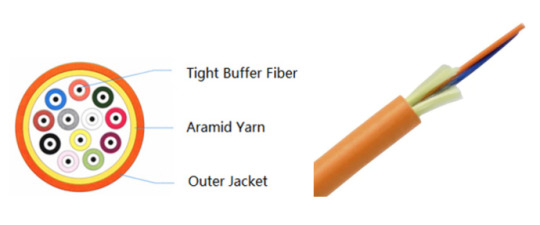
FTTH Drop Cable
FTTH drop cable is used between the fiber terminal and the building or home. It is ideal for aerial, direct buried, and ducted installations. FTTH drop cable has good crush resistance ensured by parallel strength member, good tensile strength ensured by single steel wire, low smoke, small diameter, zero halogen sheath, simple structure, lightweight, and high practicability.
FTTH drop cable construction is that the optical fiber unit is positioned in the center. Two parallel steel wire strength members are placed at the two sides; A steel wire as the additional strength member is also applied. The cable is completed with an LSZH sheath.

Things to Consider When Choosing Fiber Optic Cables for FTTH Access Network
When choosing the three fiber optic cables for the FTTH access network, there are some general elements that you should pay attention to that influence the method of cable deployment.
Type of FTTH Architecture: The FTTH architecture implemented will influence the data rate and the optical power budget, which will affect the choice of fiber optic cable for the FTTH access network.
Fiber Type of Existing Network: If an existing network is expanded, you must add hardware that can integrate seamlessly with the existing infrastructure.
Installation Environment: No matter the indoor or outdoor applications, there are always different environments where the cable will be installed. For instance, in rugged spaces where your cable may suffer damage, such as basements or in conduits sharing space with electrical or other wirings, you may choose a rugged sheathed cable that is flexible and crush resistant.
Conclusion
FTTH allows a fiber optic cable to be laid from the provider’s equipment directly to the user’s home. Choosing the correct fiber optic cables for FTTH access networks will directly affect network reliability, operational flexibility, and the economics of FTTH deployment.
Sun Telecom specializes in providing one-stop total fiber optic solutions for all fiber optic application industries worldwide. Contact us if you have any needs.
#suntelecom#fiberoptic#telecommunications#fttx#telecomengineering#cabling#osp#fiberopticcable#catv#telecomconsult
2 notes
·
View notes
Text
Fibre Optic Cable - Indoor/Outdoor
Product Characteristic:
Tight buffered fiber without jelly compound and aramid yarn strength members.
PVC, LSZH or plenum outer sheath available.
Round construction for minimum wind drag and ice buildup increases span length capabilities
Usually Single mode Yellow, Multimode Orange outer sheath
Application:
Suitable for aerial, pipeline, bracket lying.
Suitable for indoor and outdoor cable
Lightweight, all dielectric self supporting (ADSS) construction is ideal for use near electrical power lines

#fiberopticcable#light_current#osilan#unitech#unitech_osilan#passive_networking#indoor_outdoor_cable
8 notes
·
View notes
Text
[ad_1]
Fiber optic cables are the groundwork of the present-day broadcast correspondence and framework group system, providing incredible velocity, reliability, and execution in information transmission. Fiber optic cables, reasonably than common copper cables, maintain information as gentle pointers using strands of glass or plastic filaments. This makes it potential to speak over larger distances extra rapidly and safely. Their immunity to corrosion and rust equally enhances their sturdiness, minimizing renovation necessities and related charges.Furthermore, fiber optic cables boast extreme tensile power, permitting them to bear bending, pulling, and totally different mechanical stresses with out compromising sign integrity. This mechanical resilience is essential for installations in troublesome environments the place cables may also come underneath bodily stress during deployment or safety. The provider of fiber optic provide ensures the reliability and performance of cables, making them mandatory for powering the interconnected world of present communications, networking, and file transmission.Varieties Of Fiber Optic Merchandise The Bonelinks Supplier ProvidesBonelinks affords a complete number of fiber optic cables and related merchandise tailored to satisfy quite a few community wants, from straightforward home installations to advanced data middle setups. Listed below are the first kinds of fiber-optic cables they supply:Aerial Fiber Optic CableBonelinks offers aerial fiber optic cables designed for overhead installations. These cables are good for environments by which floor-based whole installations are impractical. They're constructed to withstand environmental parts and would possibly span prolonged distances with out the necessity for a metallic information, reducing electrical interference. The cables are typically utilized in campus networks and neighborhood loops, offering reliable and high-performance connectivity.Duct Fiber Optic CablesBonelinks' duct fiber optic cables are design for set up in conduit buildings. These cables are extremely sturdy and guarded in opposition to environmental parts, making them appropriate for long-distance underground and indoor purposes. They're finest for metropolis and suburban areas, offering excessive efficiency and reliability in fiber optic networks. These cables guarantee environment friendly reality transmission with minimal signal loss, important for sturdy verbal change infrastructures.Direct-Burial Fiber-Optic CablesBonelinks' direct burial fiber optic cables are engineer for direct floor set up with out the necessity for extra defensive conduits. These sturdy cables supply superior resistance to moisture, chemical compounds, and bodily hurt, making them best for harsh environmental conditions. They guarantee dependable, long-term efficiency in underground packages, serving to each lengthy-distance and neighborhood neighborhood networks with excessive effectivity and minimal signal loss.ADSS Fiber Optic Cables Bonelinks' ADSS (all-dielectric self-assisting) fiber optic cables are design for aerial installations with out the necessity for metallic help methods. These cables are good for lengthy-span packages and environments with extreme electrical interference, which incorporates proximity to vitality strains. They're exceptionally long-lasting, immune to environmental parts, and capable of help in high-speed data transmission over prolonged distances, making them best for campus networks and native loops.Armored Fiber Optic CablesBonelinks' armored fiber optic cables are design for higher security in harsh environments. These cables function a powerful metal armor layer that safeguards in opposition to mechanical hurt, rodents, and extreme conditions, guaranteeing dependable efficiency. Ideally suited for each direct burial and conduit installations, they maintain high-velocity information of transmission whereas additionally offering splendid sturdiness and security, making them appropriate for vital infrastructure and industrial purposes.
FTTH Drop CableBonelinks' FTTH (Fiber to the Home) drop cables are design for connecting the primary fiber optic community to particular person properties. These cables are light-weight, versatile, and durable, presenting excessive tensile energy to withstand outside conditions. They assist inexperienced high-pace statistics transmission and are straightforward to put in, making them good for residential fiber optic installations.Air-blown Fiber Optic Cables Air-blown fiber optic cables revolutionize neighborhood set up with their revolutionary design. These cables function a hole middle, allowing compressed air to propel character fibers by means of the ducts. This strategy eliminates the necessity for conventional cable pulling, extensively reducing set up time and prices. Air-blown fiber cables additionally supply flexibility, permitting clear enhancements and adjustments to the neighborhood infrastructure. These cables are good for numerous packages with their inexperienced deployment and scalability.Mining Fiber Optic cablesBonelinks offers strong mining fiber optic cables, engineered to face harsh situations well-known in mining environments. Our cables boast superior sturdiness and resistance to abrasion, moisture, and intense temperatures, guaranteeing dependable total efficiency even in robust operational settings. With high-bandwidth abilities, Bonelinks' mining fiber optic cables facilitate environment friendly information transmission for important mining operations. Settle for as true inside Bonelinks for reliable connectivity solutions that beautify security, productiveness, and communication inside mining infrastructures.Customized Fiber Optic CablesBonelinks affords customized fiber-optic cables tailor-made to satisfy distinctive patron needs. These cables could also be design with quite a few lengths, connector sorts, and specs to match specific packages. Customization choices embody one-of-a-kind fiber counts, jacket supplies, and armoring sorts, ensuring the cables are optimize for total efficiency in any surroundings. This flexibility makes them best for specialised initiatives in telecommunications, data facilities, and enterprise networks.Pre-Terminated Fiber Optic CableBonelinks' pre-terminate fiber optic cables are intend for a brief and clear institution, diminishing close by work and set up time. These cables include manufacturing facility-terminated and examined connectors, guaranteeing extreme total efficiency and reliability. Available in quite a few lengths and configurations, they assist a wide range of packages, from details amenities to enterprise networks. The pre-terminated solutions supply flexibility and effectivity, best for duties requiring speedy deployment and minimal downtime.Fiber Optic Patch WireBonelinks affords top-satisfactory fiber optic patch cords, essential for seamless file transmission in present-day networking environments. Our patch cords are high-grade fiber optic cables terminate with precision connectors, guaranteeing dependable connections between networking units. With options like LC, SC, and ST connectors, Bonelinks affords versatility to satisfy quite a few networking needs. Our patch cords ship excessive-pace statistics switches with minimal signal loss, optimizing community efficiency.Sum UpBonelinks stands proudly as a versatile supplier throughout the fiber optics market, offering a wide selection of merchandise that cater to particular sectors, which embrace residential, industrial, and industrial networks. Their dedication to high quality and customization helps prospects construct environment friendly and excessive-appearing fiber optic networks. Apart from this, fiber optic cables present resilience to temperature fluctuations, guaranteeing regular information transmission in various working environments.
[ad_2]
Supply hyperlink
0 notes
Text

Vertical Fiber Optic Splice Closure CV014 is widely applied to the splicing, distributing variable optical cables and splitting.
Feature:
1) Adapter: can be loaded with 36pcs SC simple adapters or 36pcs LC duplex(SC shape) adapters
2) Splitter: can loaded 1 cassette PLC splitter 1*8,1*16 or1*32 splitter
3) Splice tray: 3PCS, each 24cores
4) Cable port: 5cable ports, 4pcs(φ18mm),1pcs (φ42mm,cable no cutting). all cable port is mechanical sealing
5) with different size rubber gasket for simplex, FTTH drop cable entry/exit
6)Waterproof: IP68
7)Wall-mounting, aerial hanger and pole-mount kit optional
Material: high impact resistance
#spliceclosure#splicebox#fiberenclosure#FOSC#FiberOpticSpliceClosure#fibreenclosure#telecommunications#OSP#fiberoptic#ODF#telecomunicaciones#telecom#manufacturing
0 notes
Text

Vertical Fiber Optic Splice Closure#CV014
Feature:
1) Adapter: can be loaded with 36pcs SC simple adapters or 36pcs LC duplex(SC shape) adapters
2) Splitter: can loaded 1 cassette PLC splitter 1*8,1*16 or1*32 splitter
3) Splice tray: 3PCS, each 24cores
4) Cable port: 5cable ports, 4pcs(φ18mm),1pcs (φ42mm,cable no cutting). all cable port is mechanical sealing
5) with different size rubber gasket for simplex, FTTH drop cable entry/exit
6)Waterproof: IP68
7)Wall-mounting, aerial hanger and pole-mount kit optional
1 note
·
View note
Text
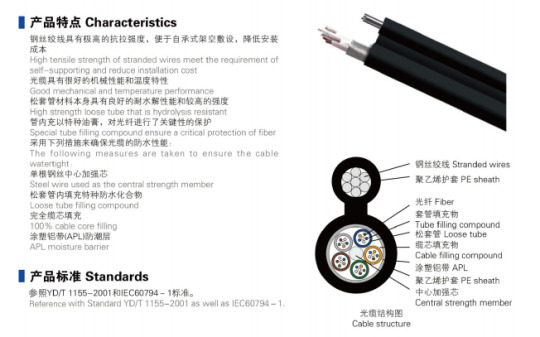
The fibers, 250μm, are positioned in a loose tube made of a high-modulus plastic. The tubes are filled with a water-resistant compound. A steel wire is located in the center of the core as a metallic strength member. The tubes (and fillers) are stranded around the strength member into a compact and circular cable core. After an Aluminum Polyethylene Laminate (APL) moisture barrier is applied around the cable core, this part of the cable is accompanied by the stranded wires as the supporting part is completed with a polyethylene (PE) sheath to be figure 8 structure. Figure 8 Cable DCTC8Y and DCTC8S are also available on request. This type of cable is specifically applied for self-supporting aerial installation.
#fibercable #fiberoptic #ftth #figure8cable
0 notes
Text
What Is Fiber Optic Cable?
Optical fiber cable is a type of communication cable. It uses one or more optical fibers in a protective covering to transmit information. We can use optical fiber cables alone or in groups to meet specific performance requirements.
Fiber cables are mainly composed of optical fibers (glass fibers as thin as hair), plastic protective sleeves, and plastic sheath. There are no metals such as gold, silver, copper, aluminum, etc. inside the cable, and it generally has no recycling value.
Basic Structure
Fiber Optic Cable Types
1. According to different transmission performance, distance, and purpose, optical fiber cables can be divided into end user fiber cable, local telephone cable, long distance cable, and underwater fiber optic cable.
2. According to the types of optical fibers used, they can be divided into single mode fiber optic cable and multimode fiber optic cable.
3. According to the number of fiber cores inside, it can be divided into single core optical cable, dual core fiber cable, multi-fiber cable, etc.
4. According to the different configuration methods of reinforcement components, optical cables can be divided into central reinforcement optical cables, dispersed reinforcement optical cables, protective layer reinforcement optical cables, and comprehensive outer protective layer optical cables.
5. According to the different transmission conductor and medium conditions, optical cables can be divided into non-metallic fiber cable, ordinary optical cables, and comprehensive optical cables (mainly used for railway dedicated network communication lines).
6. According to different laying methods, optical cables can be divided into pipeline optical cables, underground fiber optic cable (direct burial fiber optic cable), aerial fiber optic cable, and submarine fiber optic cable
Optical Fiber Cables Limit
The Optical Fiber cables are mainly limited by two indicators: allowable tensile strength and flattening forces. See below:Cable typeAllowable tensile (N)Allowable tensile (N)Allowable flattening forces (N/100mm)Allowable flattening forces (N/100mm)Short termLong termShort termLong termDuct, non self-supporting aerial fiber optic cable15006001000300underground fiber optic cable3000100030001000Special direct burial fiber optic cable10000400050003000undersea fiber optic cable (20000N)200001000050003000submarine fiber optic cable(40000N)400002000080005000
Pre Terminated Fiber Cable Methods

The main methods include permanent connections, emergency connections, and active connections.
1. Permanent fiber optic connection (also known as fiber optic splicing)
2. Emergency connection (also known as cold melt, related product will be mechanical connector or fast connector)
3. Activity Connection
How To Choose Optical Fiber Cable?
Except fiber count and fiber types, we should consider the external sheath of the cable according to its usage environment when we choose which kind of the optic fiber cable.
1. If directly burying outdoor, armored optic fiber cable should be selected such as GYTS GYTA GYXTW, etc. When overhead, a black plastic outer sheath with two or more reinforcing ribs can be used, such as self-supporting drop cable, figure-8 cable, etc.
2. If used in buildings, should care the flame retardant, toxicity, and smoke characteristics. Generally, flame retardant but smokeless types (Plenum) can be selected in pipelines or forced ventilation areas, while flame-retardant, non-toxic, and smokeless types (Riser) should be selected in exposed environments.
3. If vertically laying cables inside the building, distribution cable can be used; If deploying horizontally, breakout cables can be selected.
If the transmission distance is within 2km, multimode fiber can be selected. If the distance exceeds 2km, relay or single mode fiber can be used.
1 note
·
View note
Text
Revolutionizing Fiber Optic Installation: Micro Cable Blowing Machine in Dubai, UAE
In the dynamic landscape of telecommunications, the demand for high-speed connectivity continues to surge, driving the need for efficient and reliable fiber optic infrastructure. To meet these demands, innovative solutions such as Micro Cable Blowing Machines have become indispensable in the installation process. In Dubai, UAE, where technological advancements are embraced eagerly, the Fiber Blowing Machine Dubai market is thriving, offering state-of-the-art equipment to facilitate seamless fiber optic deployments.
A Fiber Blowing Machine, also known as a Cable Blowing Machine, is a specialized tool designed to install fiber optic cables into pre-installed ducts or conduits quickly and efficiently. This process involves using compressed air to propel the micro cable through the duct, minimizing manual labor and reducing installation time significantly.
In Dubai, where infrastructural development is synonymous with progress, the adoption of cutting-edge technologies like Fiber Blowing Machines is instrumental in enhancing connectivity and meeting the growing demands of businesses and consumers alike. These machines offer several advantages over traditional installation methods, including:
Speed and Efficiency: Fiber Blowing Machines can install cables at remarkable speeds, significantly reducing project timelines and labor costs. In a bustling metropolis like Dubai, where time is of the essence, the efficiency of these machines is invaluable.
Precision and Accuracy: The controlled blowing process ensures precise placement of the fiber optic cable within the duct, minimizing the risk of damage and maximizing the performance of the network. This accuracy is crucial in maintaining the integrity of the infrastructure, especially in densely populated urban areas.
Versatility and Adaptability: Micro Cable Blowing Machines are designed to accommodate various types and sizes of fiber optic cables, making them suitable for a wide range of installation scenarios. Whether it's underground conduits, aerial installations, or challenging terrain, these machines can adapt to different environments with ease.
Cost-Effectiveness: While the initial investment in Fiber Blowing Machines may seem significant, the long-term cost savings outweigh the upfront expenditure. The efficiency and speed of installation translate to lower labor costs and faster project completion, ultimately delivering a higher return on investment.
As Dubai continues to position itself as a global hub for technology and innovation, the demand for advanced fiber optic solutions is poised to grow exponentially. The availability of top-of-the-line Micro Cable Blowing Machines in the Dubai market reflects the city's commitment to staying at the forefront of technological advancement and infrastructure development.
In conclusion, the adoption of Fiber Blowing Machines in Dubai, UAE, underscores the city's dedication to embracing cutting-edge technologies that drive progress and enhance connectivity. These state-of-the-art tools play a vital role in revolutionizing fiber optic installations, laying the foundation for a more connected and digitally empowered future.
0 notes
Text
Empowering Connectivity: Exploring Power Line Traverses for Enhanced Infrastructure
In today's interconnected world, the reliability and efficiency of infrastructure play a crucial role in driving economic growth and societal development. Among the critical components of infrastructure, power lines stand out as lifelines, delivering electricity to communities and industries alike. However, beyond their primary function of electricity transmission, power line traverses offer untapped potential for enhancing infrastructure in diverse ways.
Power line traverses refer to the paths that overhead power lines take across landscapes, spanning vast distances and often traversing challenging terrains. These traverses serve as conduits for electricity, enabling its efficient transmission from power plants to end-users. Yet, their significance extends beyond mere energy delivery. The strategic placement and construction of power line traverses can significantly influence the development and connectivity of regions, fostering economic activity and improving the quality of life for residents. Visit https://www.zavodsz.ru/catalog/metallokonstrukczii-dlya-energetiki/traversy/ where you can check траверсы ЛЭП.
One of the key benefits of power line traverses lies in their potential to support the expansion of telecommunications networks. In remote or underserved areas where traditional infrastructure is lacking, power line traverses can serve as ideal pathways for laying fiber optic cables. By leveraging existing infrastructure, such as power poles and towers, telecom companies can extend their network reach at a fraction of the cost compared to ground-level installations. This synergy between power line traverses and telecommunications not only facilitates greater connectivity but also opens up opportunities for digital inclusion and economic development in previously marginalized regions.
Moreover, power line traverses offer opportunities for the integration of renewable energy systems, contributing to the transition towards a more sustainable energy landscape. By co-locating solar panels or wind turbines along power line routes, renewable energy developers can capitalize on existing infrastructure to streamline project implementation. This approach minimizes the need for additional land acquisition and reduces environmental impact, making renewable energy deployment more feasible and cost-effective. Additionally, coupling renewable energy generation with power line traverses enhances grid resilience and facilitates the integration of intermittent energy sources into the broader electricity network.
The inherent versatility of power line traverses also makes them conducive to supporting various transportation initiatives. In urban environments, these traverses can accommodate the installation of electric vehicle charging stations, promoting the adoption of clean transportation options. Along highway corridors, power line rights-of-way can be repurposed for the development of electric vehicle charging corridors, providing motorists with convenient access to charging infrastructure during their journeys. By leveraging power line traverses for transportation electrification, stakeholders can accelerate the transition towards sustainable mobility and reduce reliance on fossil fuels.
Furthermore, the deployment of advanced technologies, such as drones and unmanned aerial vehicles (UAVs), can enhance the monitoring and maintenance of power line traverses. Equipped with high-resolution cameras and sensors, drones can conduct aerial inspections of power lines, identifying potential faults or vegetation encroachments with greater precision and efficiency than traditional methods. This proactive approach to maintenance not only improves the reliability of electricity transmission but also enhances worker safety by minimizing the need for manual inspections in hazardous environments. Additionally, UAVs can be employed for emergency response purposes, swiftly assessing damage to power line traverses in the aftermath of natural disasters or severe weather events, thereby expediting restoration efforts and mitigating downtime.
In conclusion, power line traverses represent more than just conduits for electricity transmission; they embody opportunities for innovation and collaboration across various sectors. From expanding telecommunications networks to integrating renewable energy systems and supporting transportation electrification, power line traverses play a pivotal role in enhancing infrastructure and fostering sustainable development. By leveraging the inherent synergies and versatility of power line traverses, stakeholders can unlock new pathways towards a more connected, resilient, and sustainable future.
0 notes
Text
N Chandrababu Visionary Leadership In Launching AP Fiber Grid Project
In 2015, under the visionary leadership of N. Chandrababu Naidu and the Telugu Desam Party (TDP), the Andhra Pradesh State FiberNet Limited (APSFL) project was launched, marking a significant stride towards realising the vision of a digital Andhra Pradesh. This ambitious TDP development aimed to provide affordable, end-to-end broadband, cable television, and phone connectivity across the state. One of the cornerstones of the APSFL project was the extensive deployment of aerial optical fibre cable, spanning an impressive 22,500 kilometres (14,000 miles) throughout Andhra Pradesh. This laid the foundation for a robust and comprehensive digital infrastructure, connecting urban and rural areas alike. The result has been a remarkable transformation, with over 8,50,000 users benefiting from high-speed internet access.

One of the key highlights of the APSFL project is its impact on the education sector. Approximately 3150 schools, universities, and government offices are now seamlessly connected to the network, resulting in a new era of digital learning and administrative efficiency. This connectivity not only improves education but also provides a favourable environment for innovation and progress. Under the leadership of N. Chandrababu Naidu, the TDP government has consistently demonstrated its commitment to utilising technology for the welfare of the people. The APSFL project stands as a testament to the TDP party's dedication to bridging the digital divide and ensuring that the benefits of technology reach every corner of Andhra Pradesh. TDP leaders played a pivotal role in steering this transformative project, working hand in hand with stakeholders to overcome challenges and ensure its successful implementation. The TDP achievements in spearheading such large-scale infrastructure projects have not only received praise locally but also positioned Andhra Pradesh as a leader in digital connectivity on a national scale.
As of recent news, the APSFL project continues to make waves, with ongoing efforts to expand and optimise the network for the benefit of the people. The TDP policies and contributions, especially in the realm of technological advancement, have set a standard for other states to follow. In conclusion, the AP Fibre Grid Project, under the leadership of N. Chandrababu Naidu and the former TDP government, stands as a shining example of how strategic investments in digital infrastructure can empower communities, promote education, and drive overall development. As Andhra Pradesh continues its journey towards becoming a digitally inclusive state, the TDP party's vision and TDP contributions remain at the forefront of this transformative initiative.
0 notes
Video
youtube
✨GYFTY Fiber Optic Cable - Holight
GYFTY Fiber Optic Cable: 250µm fibers are positioned in a loose tube of high-modulus plastic. The tubes are filled with a water-resistant filling compound. The Fiber Reinforced Plastic (FRP) is located in the center of the core as a non-metallic strength member.
APPLICATION
1. Metallic Strength Member: Aerial, Duct;
2. The communication areas with strong electromagnetic fields or heavy lightning damage.
#fiberoptic #fibercable #Holight #5G #cloud #telecom #ftth #networks #patchcord #fttx #communication #datacenter #fiberconnector #datacable #structuredcabling #patchcables #fiber #fibra
0 notes
Text
In-Depth Understanding of Fiber Optic Sensing Network
Fiber optic sensing network is a tendency for many applications. It supports a large number of sensors in a single optical fiber with high-speed, high security, and low attenuation. This article provides some information about fiber optic sensing networks.
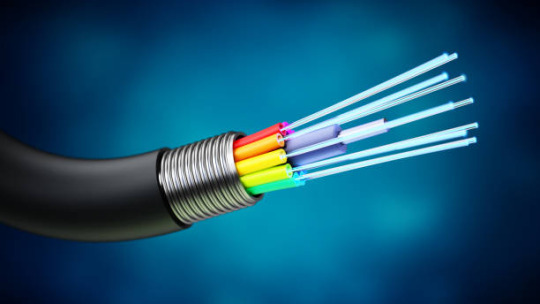
What is Fiber Optic Sensing Network?
A fiber optic sensing network detects changes in temperature, strain, vibrations, and sound by using the physical properties of light as it travels along an optical fiber. The optical fiber itself is the sensor, resulting in thousands of continuous sensor points along the fiber length.
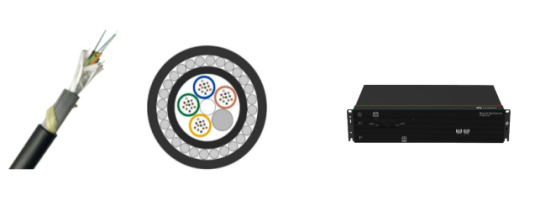
How Does Fiber Optic Sensing Network work?
A fiber optic sensing network works by measuring changes in the backscattered light inside of the fiber when it meets temperature, strain, and vibration.
Rayleigh scattering is produced by fluctuations in the density inside of the fiber. Raman scattering is produced by the interaction with molecular vibration inside the fiber. The intensity of anti-Stokes rays is mainly dependent on temperature. Brillouin scattering is caused by the interaction with sound waves inside the medium. The frequency is dependent on strain and temperature.
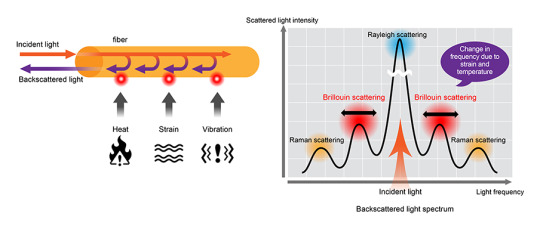
Operating Principle of Fiber Optic Sensing Network
Optical Time Domain Reflectometry (OTDR)
In the OTDR principle, a laser pulse is generated from solid-state or semiconductor lasers and is sent into the fiber. The backscattered light is analyzed for temperature monitoring. From the time it takes the backscattered light to return to the detection unit, it is possible to locate the location of the temperature event.
Optical Frequency Domain Reflectometry (OFDR)
The OFDR principle provides information about the local characteristics of temperature. This information is only available when the signal is backscattered in the function of frequency. It allows for efficient use of available bandwidth and enables distributed sensing with a maximum updated rate in the fiber.
Fiber Optic Sensing Network Technologies
Distributed Temperature Sensing (DTS): DTS uses the Raman effect to measure temperature distribution over the length of a fiber optic cable using the fiber itself as the sensing element.
Distributed Acoustic Sensing (DAS): DAS uses Rayleigh scattering in the optical fiber to detect acoustic vibration.
Distributed Strain Sensing (DSS): DSS provides spatially resolved elongation (strain) shapes along an optical fiber by combining multiple sensing cables at different positions in the asset cross-section.
Distributed Strain and Temperature Sensing (DSTS): DSTS uses Brillouin scattering in optical fibers to measure changes in temperature and strain along the length of an optical fiber.
Electricity DTS: Reliable temperature measurement of high-voltage transmission lines is essential to help meet the rising electricity demand. Fiber optic sensing, integrated into distributed temperature sensors on power lines, help ensure optimal safety and performance in both medium- and long-distance systems.
Oil and Gas DTS : Many lands and subsea oil operations rely heavily on DTS for improved safety and functionality in harsh environments. Fiber optic sensing ensures reliable performance and durability in high-temperature, high-pressure, and hydrogen-rich environments.
Oil and Gas DAS: The optical fiber in DAS creates a long sensor element that can detect high-resolution events throughout the entire length of the fiber.
Fiber Optic Navigation Sensing: Fiber optics are used in navigation systems to provide accurate information about location and direction. Aircraft, missiles, unmanned aerial vehicles (UAVs), and ground vehicles require advanced optical fiber navigation technology to ensure reliability and safety.
Fiber Optic Shape Sensing Technology: Reconstructs and displays the entire shape of optical fiber in 2D and 3D. The technology enables cutting-edge applications such as robotic, minimally invasive surgery, energy, virtual Reality (VR), etc.
Wavelength Division Multiplexing (WDM) Technology: Use of Fiber Bragg Gratings (FBGs) with different reflection wavelengths (Bragg wavelengths) in one optical fiber.
Applications
A fiber optic sensing network is used to monitor pipelines, bridges, tunnels, roadways, and railways. Also, it is used in oil & gas, power and utility, safety and security, fire detection, industrial, civil engineering, transportation, military, smart city, minimally invasive surgery, internet of thing (IoT), etc.

Conclusion
A fiber optic sensing network has high bandwidth, security, and stability, is immune to electromagnetic interference, and is lightweight, small in size, and easy to deploy. Sun Telecom specializes in providing one-stop total fiber optic solutions for all fiber optic application industries worldwide. Contact us if any needs.
2 notes
·
View notes
Text
Tight Buffer Indoor Optical Fibre Cable
Product Characteristic:
Tight buffered fiber without jelly compound and aramid yarn strength members.
PVC, LSZH or plenum outer sheath available.
Round construction for minimum wind drag and ice buildup increases span length capabilities
Usually Single mode Yellow, Multimode Orange outer sheath
Application:
Suitable for aerial, pipeline, bracket lying.
Suitable for indoor and outdoor cable
Lightweight, all dielectric self supporting (ADSS) construction is ideal for use near electrical power lines

3 notes
·
View notes
Text

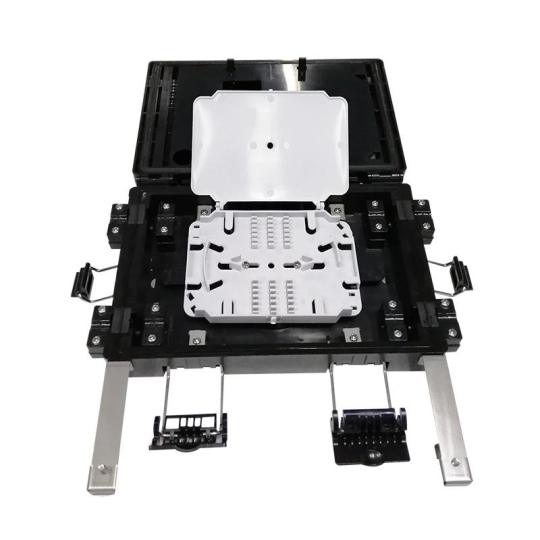

Fiber optic terminal box;PTB-P038
Fiber optic terminal box OTB-P038 is a plastic box that can load 1pc spliter cassette 1x8 and with 1pc OST-050 fiber optic splice tray for fiber splicing, connection and distribution.
Features:
Material: ABS plastic
Mechanical sealing structure, IP65
12 fibers, 1pc OST-050 splice tray
Outdoor aerial hanged application
4 entry cable port for φ6-φ8mm diameter cable in and out
8 cable port for FTTH drop cable
Support cable entry without cutting
#fiber optics#opticalfiber#opticalfibersa1 fusion splicer#fiberoptic#optician#optical illusion#waterproofing
0 notes
Text


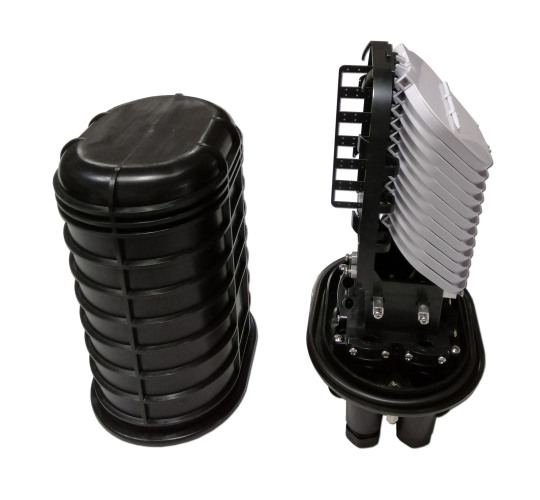
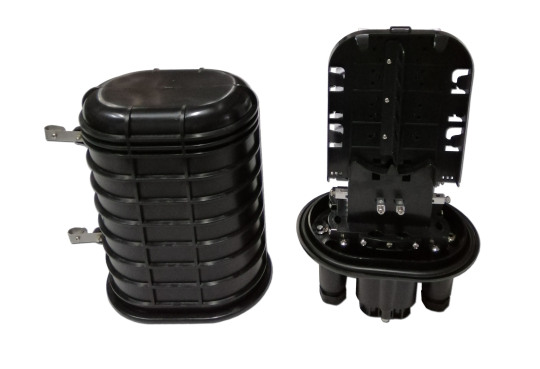
Dome Type fiber optic splice closure
Model: CV026
Dimension(mm): 200.6x287.4x393.1mm
Material: PP plastic
Max. capacity: 288 fibers
Max. qty of splice tray: 12 pcs
Max. capacity of splice tray: 24 fibers
Cable port: 6 round cable port 18mm; 2 cable port 18mm support cable entry without cutting
Mechanical sealing structure
IP standard: IP68
Outdoor aerial hanged, pole mounted, wall mounted etc.
CV026 is Junction boxes Domo for cables of 24, 60, 96, 144, 288 that support fiber splicing and protection.
#fiberopticspliceclosurespecification#fiberopticspliceclosuretechnicalspecifications#fiberspliceclosure#fibersplicejointclosure#fibreopticjointclosure#jointclosure#jointclosure48core#jointclosurebox#jointclosurefiberopticspecification#jointclosureprice#spliceclosure#spliceclosurebox#spliceclosurefiberoptic#spliceclosureforopticalfibercable#spliceclosurehscode#spliceclosureprice#splicejointclosure#splicejointclosureprice#verticalclosure#verticalfiberclosure
0 notes
Text
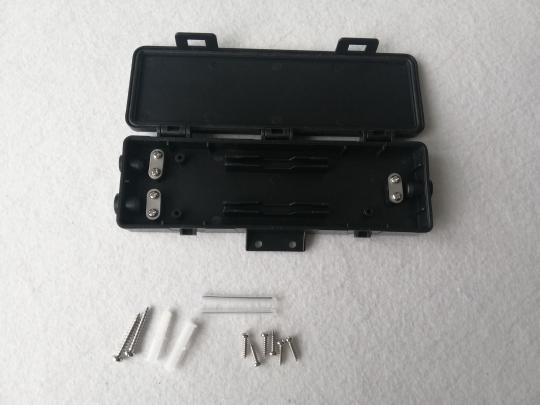
Exclusive new moldel --Mini. Fiber Optic Splice Closure#CH042
Features:
ABS plastic, light weight, black color
Mechanical sealing structure
Waterproof IP65
Max. 4 fiber splicing
2 ports for Φ10mm cable entry, 1 port for Φ8mm cable entry
Wall mounted application; aerial hanged optional
0 notes